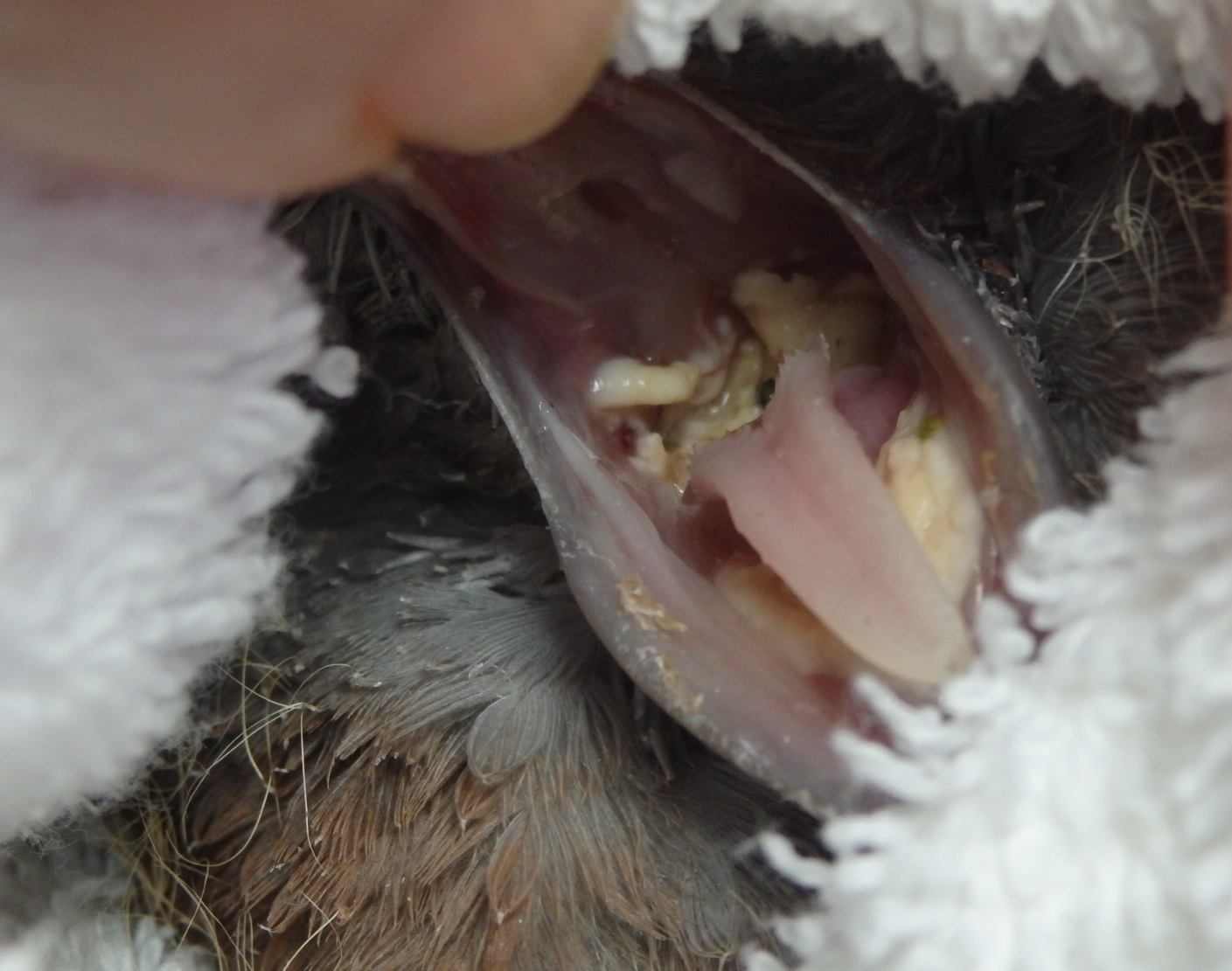Trichomoniasis
Every year we get in birds that are suffering from the Trichomoniasis parasite. These outbreaks usually occur during late summer and autumn, but can extend into the winter months, and any species of bird can be infected with this parasite.

The Trichomoniasis parasite is commonly found in the mouth, throat, crop, gastro-intestinal and upper respiratory tract of a bird. White or yellowish cheesy looking lesions progressively block the bird's throat, making it eventually impossible for the bird to swallow food, resulting in the bird dying slowly from starvation. If a bird is brought to us and is displaying the early signs of the disease, this can be effectively treated. However, very often by the time the bird has become too weak to fly, and can therefore be picked up, the disease has sadly usually become too advanced to treat. The Trichomoniasis parasite is spread via contaminated food, water sources, bird droppings or by infected parent birds regurgitating food to their young, as with pigeons. Infected birds will usually show signs of lethargy, fluffed up plumage, and will very often have matted smelly feathering around the face and beak.
How to prevent the disease from spreading
The higher the concentration of birds at a feeding station, the greater chance there is of a healthy bird picking up an infected food particle, and becoming ill with Trichomoniasis. Therefore, good hygiene around feeding stations will help prevent the disease from spreading. Always sweep up droppings and spilt old food from under the feeders, thereby preventing a build up of infection. Clean and disinfect feeders and bird baths regularly, rinsing them thoroughly, and allowing them to air dry completely. Always change the drinking and bathing water daily, and don't place these under feeders where the water will quickly become contaminated with food particles and droppings.
It is also helpful to reduce the number of birds in one place, by having a number of feeding stations around your garden. There are several products on the market that will help to control both the spread of Salmonella and Trichomoniasis. Two products we would recommend are manufactured by Vetark. One of the products is Ark-Klens, which is excellent to use when disinfecting feeders, bird tables, baths and helps to prevent the spread of Salmonella. The other product is Citrosan, which helps to control any contamination by the Trichmoniasis parasite in drinking water. These products, and others, can be sourced from their website www.vetark.co.uk.
As wild birds can be infected with a variety of diseases, we would recommend you wear rubber gloves when handling feeders, or working around the bird table area. However, the Trichomoniasis parasite is totally harmless to humans, and indeed all mammals.